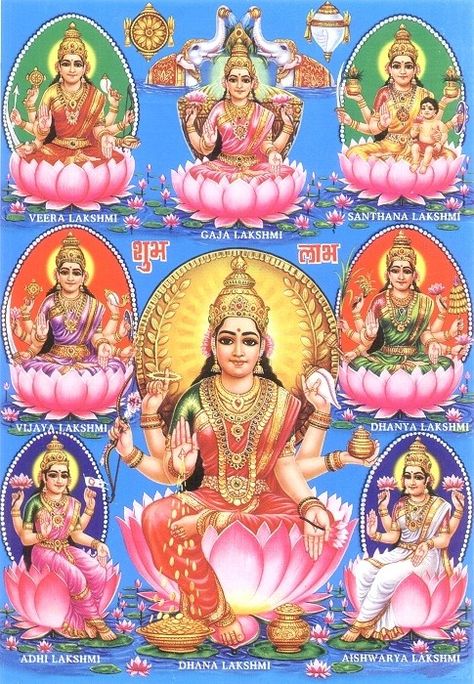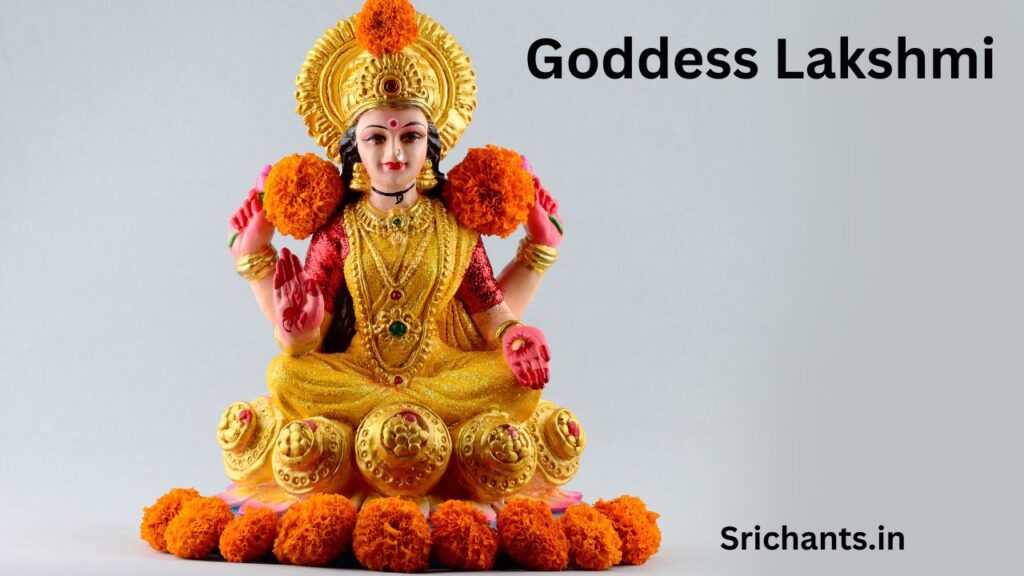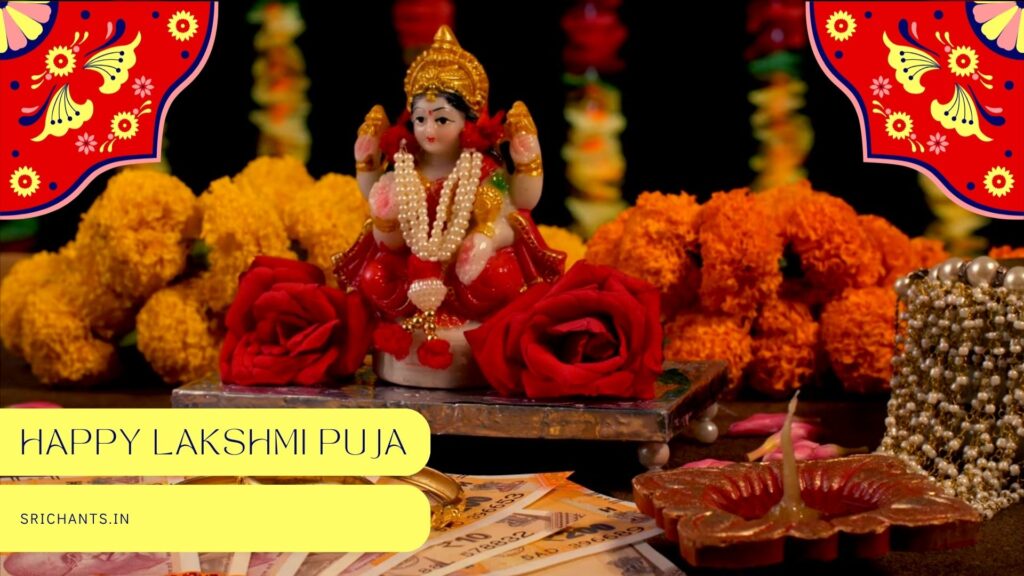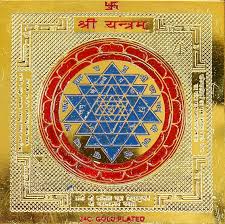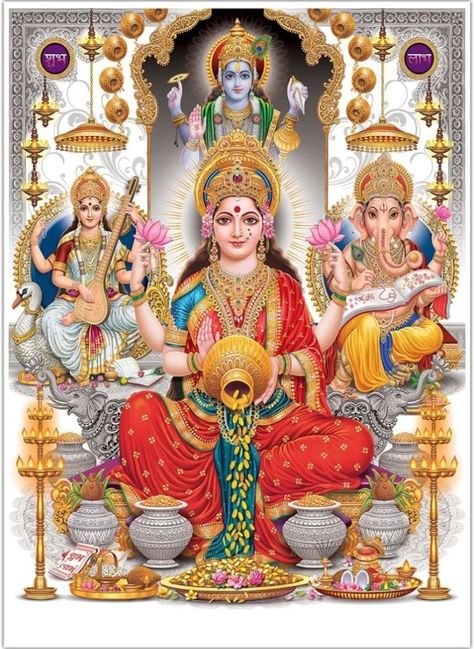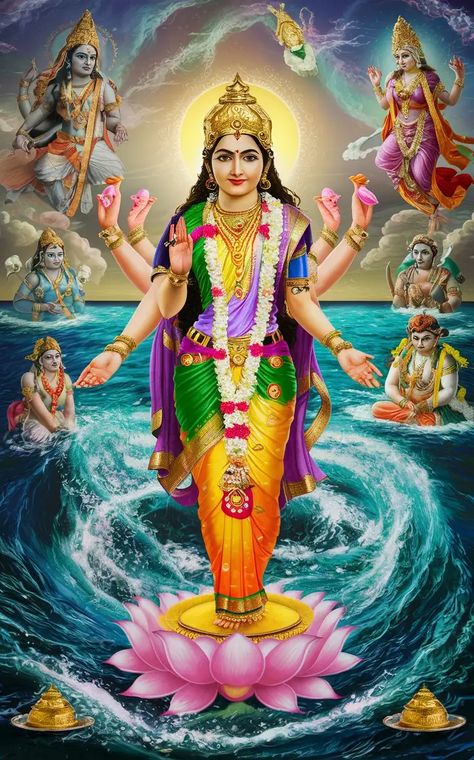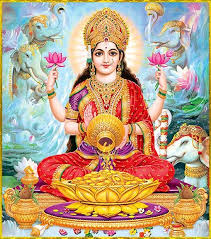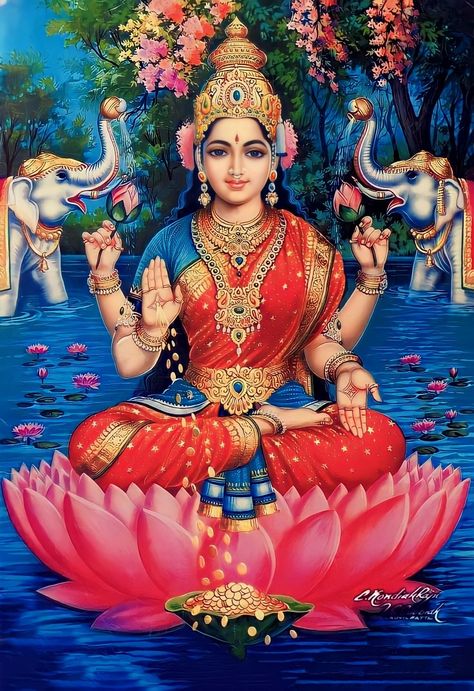Lakshmi Ashta or Ashta Lakshmi | The 8 Forms of Lakshmi
Introduction
Many times in the current world, wealth is limited to having a lot of money and material goods. But a considerably deeper and more complex understanding is provided by the Vedic viewpoint on wealth, as represented by the idea of Lakshmi. More than just a goddess to be worshipped, Lakshmi is a deep Vedic science that reveals the actual essence of prosperity, plenty, and human flourishing.
Lakshmi’s Etymology and Symbols
From the Sanskrit roots “lakṣ” and “lakṣa,” which mean, respectively, “to perceive, observe, know, understand” and “goal, aim, objective,” comes the word “Lakshmi.” According to this derivation, Lakshmi stands for the knowledge and comprehension needed to fulfill one’s greatest life goals and dreams.
Deeply symbolic is likewise Lakshmi’s iconography. Most often, she is shown seated or standing on a lotus flower, frequently clutching lotuses in her hands. A flower that blooms in even the darkest of seas, the lotus stands for the capacity to cultivate plenty, purity, and beauty in the face of adversity. It represents the Vedic idea that, notwithstanding one’s surroundings, one can achieve real wealth and prosperity.
Life’s Four Main Goals
Vedic traditions state that four main goals, or “Purusharthas,” direct the search of a happy and meaningful life: Dharma (Duty), Artha (Wealth), Kama (Desire), and Moksha (Liberation). They are to be pursued in a particular sequence, with Artha (Wealth) coming after Dharma (Duty) and before Kama (Desire) and Moksha (Liberation).
Lakshmi is understood in Vedic literature in close connection to the idea of Artha, or riches. Lakshmi stands in for the understanding and discernment needed to acquire, handle, and use money in a way that facilitates the performance of one’s Dharmic obligations and the ultimate quest of spiritual emancipation.
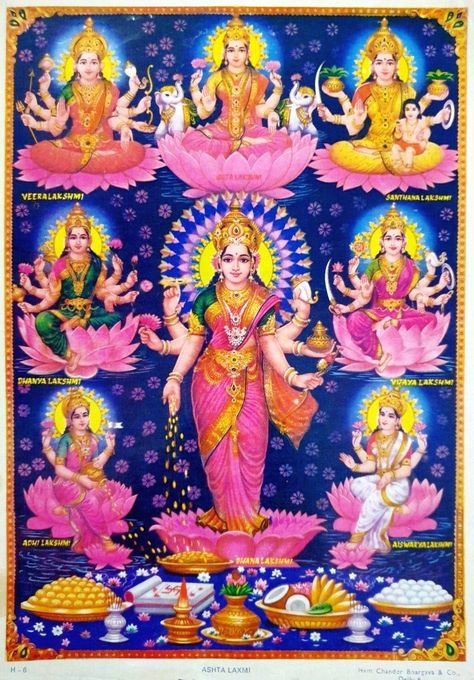
Eight Lakshmi Manifestations
Lakshmi is said to have eight main incarnations in Vedic literature, each of which stands for a distinct facet of prosperity and wealth:
Adi Lakshmi, or the Original Lakshmi
Adi Lakshmi stands for a basic knowledge of one’s own resources, skills, and current situation. The emphasis of this Lakshmi form is on the need of self-awareness and knowledge as the foundation for wealth generation.
Dhana Lakshmi, or the Wealth of Resources
Money, real estate, and other material goods are represented by Dhana Lakshmi. This type of Lakshmi promotes wise use of these resources to further one’s Dharmic objectives.
The Wealth of Courage, Dhanya Lakshmi
Dhanya Lakshmi stands in for the abundance of bravery and determination. This manifestation of Lakshmi stresses the need of being courageous and resolute enough to follow one’s dreams in spite of obstacles.
Veera Lakshmi (Power and Prestige Riches)
Veera Lakshmi stands in for the abundance of influence, power, and social standing. This kind of Lakshmi promotes using power and reputation in a way that advances the common good and the performance of one’s Dharmic obligations.
The Wealth of Abundance, Gaja Lakshmi
Elephants are frequently shown flanking Gaja Lakshmi, who stands for the wealth of plenty. The need of developing an affluence and giving mentality is emphasized by this manifestation of Lakshmi.
The Wealth of Progeny Santana Lakshmi
Santana Lakshmi stands for progeny riches, or the capacity to establish a dependable family and encouraging social network. This kind of Lakshmi promotes the development of positive relationships and the transmission of one’s impact to next generations.
The Wealth of Sovereignty, Aishwarya Lakshmi
Aishwarya Lakshmi is a symbol of sovereignty, or the capacity to have power and influence over one’s situation. Lakshmi in this form promotes the development of self-control and the ability to mold reality.
The Wealth of Victory, Vijaya Lakshmi
Vijaya Lakshmi is the richness of triumph, or the capacity to get beyond challenges and realize one’s ambitions. This Lakshmi manifestation stresses the value of tenacity, fortitude, and the unrelenting quest of achievement.
Money’s Purity and the Lotus
In the Vedic concept of riches and prosperity, the lotus flower—a recurrent motif in Lakshmi’s iconography—has great meaning. Because lotuses can grow in the darkest of waters, they stand for the capacity to create plenty, purity, and beauty in the face of adversity.
This symbolism reminds us that real wealth and prosperity may be achieved by developing inner attributes like courage, self-awareness, and a dedication to Dharma (good action), rather than depending just on outside circumstances. As such, the lotus represents the Vedic idea that prosperity and plenty are possible for everyone, no matter where they begin or what challenges they may encounter.
Lakshmi plus the Four Purusharthas
The four main goals, or “Purusharthas,” that direct the search of a meaningful and satisfying existence are intimately related to the Vedic notion of Lakshmi: Dharma (Duty), Artha (Wealth), Kama (Desire), and Moksha (Liberation).
The goal most directly linked to Lakshmi is Artha, or the quest of money and material success. But Vedic teachings stress that Artha has to be pursued in a manner that helps one to carry out their Dharmic obligations and eventually achieve Moksha (spiritual emancipation).
Lakshmi, then, is the wisdom and knowledge needed to acquire, handle, and use money in a way that is consistent with the greater objectives of Moksha and Dharma. The contemporary, frequently narrow emphasis on accumulating riches as a goal in and of itself contrasts with this Vedic view of Lakshmi.
Lakshmi and the Search for Truth
The quest of Artha (wealth) is a method to facilitate the performance of one’s Dharmic obligations rather than an independent goal in the Vedic worldview. The fundamental idea directing the Vedic path to success and wealth is called Dharma, or righteous duty.
In this sense, Lakshmi stands for the knowledge and discernment needed to obtain and manage money in a manner that promotes the greater good and the performance of one’s Dharmic duties. This knowledge highlights the need of matching one’s material goals with the more lofty ideals of morality, social responsibility, and spiritual development.
Lakshmi and the Moksha Chase
Although the Vedic framework emphasizes the pursuit of Artha (wealth) and Kama (desire), reaching Moksha, or spiritual emancipation, is the ultimate aim. In this sense, Lakshmi stands for the prosperity and plenty that can let the person get to Moksha.
According to the Vedic teachings, genuine wealth and prosperity are cultivated interior traits like knowledge, detachment, and spiritual enlightenment rather than being only material in character. Lakshmi is consequently the embodiment of the wisdom and insight needed to realize the greatest human potential as well as the goddess of material wealth.
Lakshmi and the Seeking of Balance
The Vedic approach to Lakshmi stresses the need of moderation and balance in the search of money and success. Achieving riches, or Artha, is a legitimate and essential goal, but it has to be weighed against doing one’s Dharmic obligations and eventually pursuing Moksha, or spiritual freedom.
Here, Lakshmi stands for the knowledge and awareness needed to negotiate the intricate relationship between material and spiritual goals. Rather of becoming engrossed in the chase of worldly riches, this Vedic interpretation of Lakshmi exhorts people to seek money and abundance in a way that promotes their general well-being and the better good.
Conclusion
Riches, prosperity, and human flourishing are profoundly and multidimensionally understood in the Vedic notion of Lakshmi. Far from being a straightforward goddess of material plenty, Lakshmi stands for the knowledge, wisdom, and balance needed to acquire, manage, and use riches in a way that facilitates the performance of one’s Dharmic obligations and the ultimate quest of spiritual emancipation.
Adopting the Vedic knowledge of Lakshmi, people and communities can develop a more comprehensive and long-lasting strategy for generating prosperity, based on moral values, social responsibility, and a profound awareness of how everything in human existence is interrelated. By acting thus, we can realize Lakshmi’s full potential and the Vedic picture of a peaceful and prosperous world.
#8formsoflakshmi #astalakshmi #lakshmi #astha
